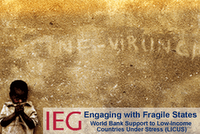 LICUS: Toward an Understanding of Fragility and Countries’ Governance. What’s in it for The Caribbean Community and
LICUS: Toward an Understanding of Fragility and Countries’ Governance. What’s in it for The Caribbean Community and For some countries the impacts of development strategies and the role of the international community will have to be strengthened to really carry out sound policy analyses, donors’ programmatic and aid allocations to attack the root-causes of poverty, instability and the institutionalization and prioritization of inclusive reforms processes.
In what can be seen as a dramatic increase in the numbers of fragile states, over the last couple of years a report by the World Bank has been computing those figures with a staggering evolution that has scaled up from 17 to 25.
Among some of the characteristics used to define a fragile state, the use of indicators such as the World Bank’s Country Policy and Institutional Assessment (CPIA) classify results under five categories of performance to harbor a working definition of fragility that reveal the extent, and lack of functioning for governments to attend to the needs of their people, and on the same token to commit on the implementation of Poverty Reduction Strategies (PRS), and social development programs.
“Past International engagement with these countries has failed to yield significant improvement and donors and others continue to struggle with how best to assist fragile states. LICUS are characterized by weak policies, institutions and governance. The Bank identified 25 such countries in fiscal year 2005. These 25 countries have a number of similarities: their infant mortality rate is a third higher than that of other low-income countries, life expectancy is lower, and their maternal mortality rate is about 20 percent higher.”
For the Caribbean region, these perspectives do matter given the dire situations faced by Haiti on a daily basis where poverty in its midst is a constant reminder of the threats associated with regional destabilization, security and the costs associated with crisis responses.
*Fragile states risks instability








